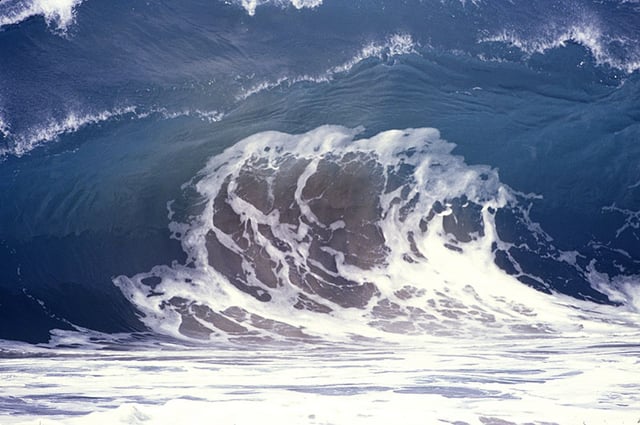
Virtual Reality has moved from the theoretical to the tangible. Most of the big content TV players have experimented with VR360 over the past two years and launched prospective services.
Both technologically, and to test market appetites, more companies are looking to VR to enhance current offerings, demonstrate innovation, and provide additional monetization opportunities. However, productization has proved far more challenging than expected. The primary challenges in delivering high-quality, engaging VR360 experiences include:
Providing top-quality video resolution
“Higher resolution, please. 1080p is not enough” is how Anthony Wu, an early adopter described the quality of most current VR. Forays into 4K, 8K and beyond should eliminate the pixilation that currently plagues many VR applications.
Yet even when the RAM is powerful enough to support data rates that can be 17 times those of normal HD video, few delivery networks are able to handle bandwidths of over 20 Mbps. Tile-based streaming and viewport-adaptive techniques assist in making the video accessible without exceeding networks’ bandwidth capabilities.
Providing exceptional audio quality
Just as poor video quality prevents a truly immersive adventure, so poor audio quality hampers the experience. High quality 3D audio is required to provide precise and interactive sound positioning associated with head tracking to create a truly immersive experience. As with video, offering this at low latency is also challenging.
Ensuring consistent, high-quality delivery to multiple devices
Android fragmentation is a growing issue as the number of devices, OSs, sensors, and more continue to expand. Supporting the current 14,290 flavors of phones and tablets software and hardware codecs to provide a uniform experience requires extensive technological expertise.
Protecting expensive produce content
No longer a one-way transmission, sent to your TV or mobile, VR is an interactive venture. While a show or sports event is streamed in the same manner to all users, VR systems are also collecting data from the user, such as head and arm movement, and this data affects how the next events play out. VR is also increasingly likely to incorporate wireless technology to enable unrestricted, untethered movement. All these streams must be protected, no small challenge with multiple sensors and real-time reactions.
Lack of original content
Since VR content requires a seismic shift in creating and developing content and is expensive to produce, not many have taken the plunge yet. In fact, the VR Industry Forum (VRIF, of which VO is a member, whose purpose is the development of standards in support of VR services and devices) is requesting original content to build a library.
This content library will provide “public test vectors that may be used by content providers, service providers as reference, and by manufacturers of applications and devices to test implementations against the VRIF guidelines.”
What will enable operators to offer true VR?
As noted at IBC2017 by Alain Nochimowski, EVP of Innovation at VO, the engine of the Second Wave of VR that will enable premium VR360 video experiences consist in the combination of top-quality video, with interactivity, immersive audio, and sensor-rich HMDs. However, operators need more than just superior technology to be able to see business benefits from VR. Here are some of the ways that operators can positively influence the bottom line:
Monetizable premium VR360 video experiences
Producing quality VR360 content requires a significant financial outlay. To offset these high costs, content owners and providers require sufficient means to recoup their investments. This requires both protecting their content from piracy and offering monetization opportunities.
Superior content protection must be part and parcel of the streaming services, as VO has done by integrating content protection into its top-quality multi-platform media player. While the market for VR is still small, as it grows so will the threat of piracy, and strong anti-piracy protection measures will be required.
VR shows potential for ultra-personalized advertising based on advanced data analytics. In addition, product placement can be personalized, according to where the collected data indicates where user looks the most, within their VR environment. In addition to personalization, as Lorenzo Zanni noted at IBC 2017, the “VR advertising inventory could potentially be charged at a premium to advertisers, due to its immersive and memorable nature.”
Live events
Why do sports offer high potential for VR experiences? Mainly because fans are looking to recreate the stadium, which does not happen in front of the TV set. VR promises to bridge this gap by creating a virtual stadium, with real-time video and audio, delivering the event as close as possible to being there.
Discover the first live streaming of a sports event in 360° and Ultra HD here.
Enabling second screen scenarios
VR is also showing potential as a second screen to supplement the viewing experience on TV. As viewers can now flip between channels and other media on YouTube or Facebook, they can now add 3D as an enhanced alternative.
Enabling social sharing in VR360
Wearing a VR headset can be isolating since users cannot see the reactions of others in the ‘physical world.’ Advances in VR are enabling sharing in various ways, for example, the Samsung Gear VR now supports Chromecast so that one can share what’s in their headset on the big screen.
If the second wave in VR is to be a tidal wave, all of these factors have to be considered to some degree. And while there are definitely areas that hold promise for TV operators — including monetization opportunities, and the ability to provide immersive live events, social sharing, and second-screen scenarios mentioned above — realistically the next generation of HMDs is going to be required before that opportunity can be fully realized. 2018 will undoubtedly be a year to watch.


